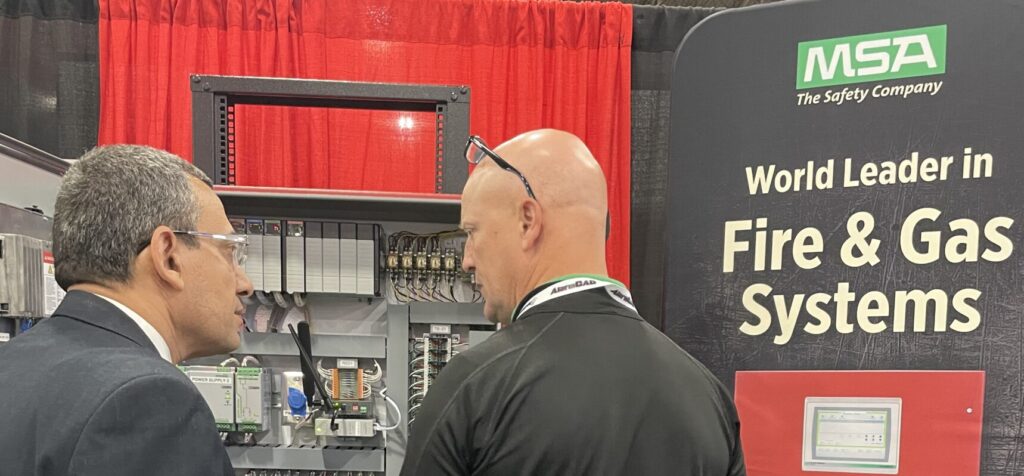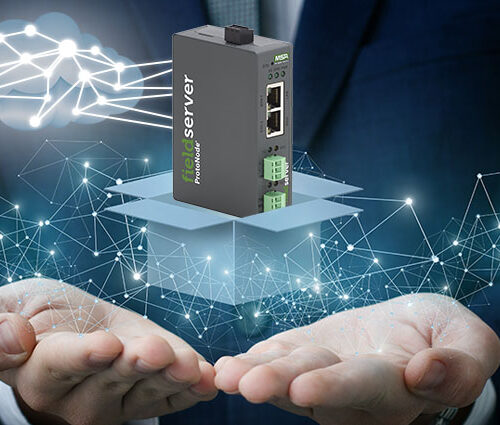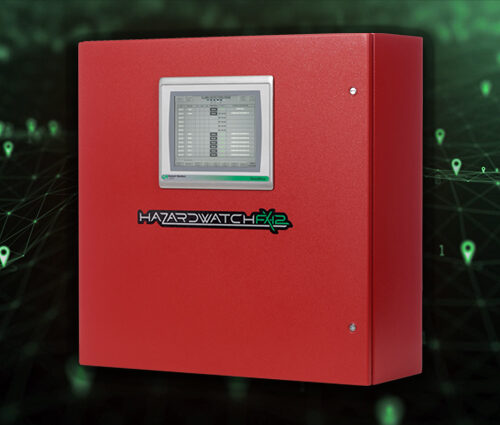
Here at MSA FieldServer, we’re serious about life safety solutions. That’s why we spent some time recently at the 2023 NFPA Conference & Expo. In addition to presenting on industrial hydrogen hazard solutions, we listened in as NFPA released its 21st edition of the Fire Protection Handbook, which details how the world of fire protection has changed in just the past 15 years.
From inspection, testing, and maintenance of water-based fire protection systems, fire safety has undergone a tremendous transformation and we have heightened safety awareness and the rise of advanced technologies to thank for that.
Intelligent Fire Safety
Perhaps the biggest change, though, has been the digitization of both operations and occupational safety. In fact, NFPA President and CEO Jim Pauley gave a rousing presentation for conference attendees, during which he talked about the impact of digital transformation and the need to adapt to the changes in order to achieve better outcomes.
More importantly, Pauley shared this statistic as he emphasized the importance of advanced safety measures and new technologies:
Digital transformation initiatives are expected to attract $2.3 trillion in spending this year, with 90% of executives believing it will fundamentally alter their industries.
“NFPA General Session Spotlights Embracing Digital Transformation for Enhanced Safety” — NFPA.org
IIoT Fire Alarm Systems
One reason digitization has been revolutionary is because of the Industrial Internet of Things (IIoT). In fact, IIoT has enabled things we often now cannot live without, such as remote access, automated alarms, and instantaneous data visualization. This is taking connectivity’s capabilities far beyond what’s been humanly possible.
The bottom line is that the adoption of IIoT smart-enabled technologies has not only helped organizations optimize operations, it’s also helped improve—and continues to help improve—fire safety.
Multiple Systems vs. One System
With changes in technologies and NFPA 72® standards, today’s fire alarm systems can integrate temperature, flame, and smoke into their fire and gas detection infrastructure. The combination of multiple systems into a single system integrated into the larger SCADA is relatively new, but it’s proving to offer enhanced protection against fire-related hazards.
Remote Monitoring & Alerts
One of the most impressive and important outcomes of modern-day fire alarm panel integration is that the information gap has been closed, and the result is empowering. That’s because advanced fire alarm panels, gas and flame detectors, and remote monitoring together give organizations some of what they need most to enhance certain decision-making: immediate, real-time visibility and insight. Now, meaningful data can be delivered to the right people at the right time and in the right place.
As an example, MSA FieldServer partners with a variety of industrial organizations on their fire safety solutions. With the FieldServer ProtoAir these safety-minded organizations can quickly and reliably get the data, diagnostics, and updates they decide is needed. Even better, it’s delivered via the FieldServer FGFD ProtoAir wireless gateway and MSA’s Grid Cloud Platform or other third-party cloud solution.
Fire Alarm Systems: The FieldServer Advantage
As a pioneering automation gateway solution, FieldServer remains an industry leading IIoT solution for awareness and action. In fact, our one-box solution not only enables fire safety devices to easily interface with automation control networks, it meets multiple protocols, including Modbus TCP/IP, BACnet/IP and EtherNet/IP. That means you can unify and connect disparate makes and models of fire panels.
But that’s not all. In addition to multi-protocol communication, here are three more reasons to choose FieldServer for fire panel integration.
-
Speed
FieldServer is uncomplicated yet powerful. Our high-performance, multi-protocol IIoT gateway requires little configuration and easily interfaces with other protocols for both new and legacy devices. That means you can usually be up and running in about 2 weeks, not 2 months (or more).
-
Cost
Bigger systems are expensive. FieldServer isn’t. This cost-effective interoperability solution is versatile, easy to configure, and economical.
-
Reliability
MSA FieldServer has been around a long time and continues to set the industry standard for reliability. Not only do our system experts design and manufacture NFPA 72 compliant fire and gas systems, we can, in certain applications, get site approval for UL 864.
As an example, we worked with the University of Arizona to provide a tried-and-true solution to bring their various devices into their campus SCADA—including incorporating a Simplex fire alarm infrastructure. NFPA rules, however, do not allow FieldServer to take information from a fire panel and initiate or suppress the alarm system. But it can take that information and send it to building control, giving those who monitor the central panel the information they need to make necessary adjustments. This was no small feat, considering that all the different systems and protocols going through the FieldServer accounted for some 1.5 million data points each month at the university.
Life Safety Resources
When it comes to fire panel integration, the goal is access to the right data at the right time.
So, we invite you to learn more about how the FieldServer full-featured, Cloud-connected, field-programmable wireless IIoT gateway can streamline your integration.
Better yet, contact an MSA Safety Sales Representative today to see how we can help you on your own journey in digital transformation.






